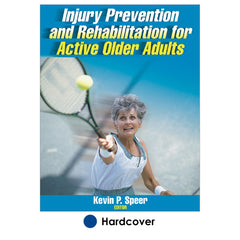Dietary recommendations for graying athletes
This is an excerpt from Injury Prevention and Rehabilitation for Active Older Adults by Kevin Speer.
Summary of Recommendations for the Graying Athlete
- Fluid intake should be adequate to meet daily needs and replenish losses due to sweat and daily functioning (rest: six to eight 8-oz glasses activity: 10 to 12+ depending on intensity of exercise, environmental conditions, and sweat losses). Some replenishment fluids should come from energy drinks, which contain small amount of carbohydrate and sodium to help with restoring glycogen and fluid retention. This is essential when exercising more than 30 to 45 min.
- Esre adequate caloric intake to maintain healthy weight and sport performance.
- Obtain the majority of calories from unrefined, complex carbohydarates and from simple carbohydrates in the form of fruit and those added to fluid replenishment beverages. Small amounts of simple carbohydrates may come from occasional desserts, ideally postexercise to replenish glycogen stores.
- Protein requirement is at least 1 g prodtein per kilogram body wieght.
- Total fat calories should not exceed 30% of total calories with no more than 10% coming from saturated fat. If weight is not a concern, fat intake may be increased to 35%. If the fats are predominately monounsaturated or omega 3 fats: If maintaining optimum body weight is problematic, fat is more calorically dense.
- Ensure adequate B12 and B6 intake by incorporating foods that have been fortified with B12 and are rich in B6.
- Ensure adequate calcium intake by striving to include more dairy products in the diet and supplementing in the range of 1,000 to 1,200 mg/day.
- It is imperative for people to address andy stress incontinence issues they have, as this condition can limit one's intake of fluids and increase the rish of dehydration. If fluid intake is already a concern, people should be sure not to consume caffeinated beverages, as these will increase the need to urinate more frequently.
- Environmental conditions also play a key role in hydration. Hot, humid conditions can deplete fluid reserves quickelyt and need to be considered prior to exercising. Following recommended guidelines for hydration can be difficult or even impossible for aging people because of medical concerns regarding stress incontinence. Therefore the recommendation is that each individual increase fluid intake to personally tolerable levels.
This is an excerpt from Injury Prevention and Rehabilitation for Active Older Adults, edited by Kevin P. Speer.
More Excerpts From Injury Prevention and Rehabilitation for Active Older Adults

Get the latest insights with regular newsletters, plus periodic product information and special insider offers.
JOIN NOW


